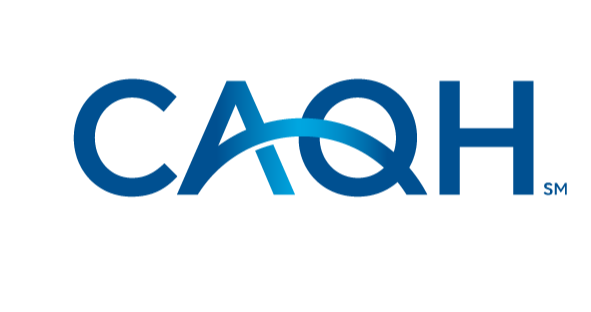Filling Out a CAQH Application
- Emily Walker

- Oct 25, 2023
- 5 min read
Updated: Aug 12, 2024
What is CAQH?
CAQH ProView profiles are widely used in the healthcare industry for credentialing, directory maintenance, and other administrative processes that streamline the provider enrollment process with insurance companies and healthcare organizations. CAQH provides different types of profiles tailored to meet the specific needs of various healthcare professionals and organizations. Below are the four main CAQH profiles, each serving a distinct purpose:
1. CAQH ProView for Providers
Purpose and Use:
Primary Profile for Credentialing: This profile is designed specifically for individual healthcare providers, such as physicians, nurse practitioners, physician assistants, dentists, and other allied health professionals. It serves as a centralized repository of a provider’s credentials, including education, training, licensure, work history, practice locations, and more.
Streamlines Credentialing: Providers use this profile to enter and maintain their information, which can be accessed by insurance companies and other healthcare organizations for the purpose of credentialing, contracting, and network enrollment.
Updating and Re-Attestation: Providers are required to keep their profiles updated and must re-attest to the accuracy of their information every 120 days. This ongoing maintenance ensures that insurers always have access to current and verified provider information, reducing delays in credentialing.
Key Features:
Single Data Entry: Providers enter their data once and share it with multiple organizations, eliminating the need to fill out numerous forms.
Document Uploads: Providers can upload important documents, such as licenses, certifications, and malpractice insurance certificates, directly to their profile.
Secure Access: Only authorized entities, such as insurers or hospitals that the provider designates, can access the profile, ensuring data privacy and security.
2. CAQH ProView for Practice Managers
Purpose and Use:
Management of Multiple Providers: This profile is tailored for practice managers, group administrators, and office staff responsible for handling the credentialing of multiple providers within a practice, clinic, or healthcare organization.
Centralized Oversight: Practice managers can oversee and manage the credentialing information for all providers within their organization from a single account, streamlining the process of maintaining up-to-date profiles.
Batch Updates and Re-Attestation: The profile allows practice managers to make batch updates, such as changes to practice location or billing information, and to re-attest on behalf of all providers in the group, saving time and reducing administrative burdens.
Key Features:
Dashboard View: Practice managers have access to a dashboard that displays the status of all providers’ profiles, including pending tasks, re-attestation dates, and missing information.
Document Management: The profile supports the upload and management of required documents for each provider, ensuring that all necessary credentials are accessible and up-to-date.
Delegated Access: Allows practice managers to delegate access to other team members, ensuring that credentialing tasks can be distributed among staff.
3. CAQH EnrollHub
Purpose and Use:
Electronic Funds Transfer (EFT) Enrollment: EnrollHub is a CAQH solution specifically designed to facilitate Electronic Funds Transfer (EFT) enrollment for providers, allowing them to receive payments directly from health plans and insurers.
Simplified Payment Process: Instead of managing EFT enrollments individually with each health plan, providers can enroll once through EnrollHub, streamlining the process and reducing administrative complexity.
Enhanced Payment Efficiency: By centralizing EFT enrollment, EnrollHub helps providers improve their payment processes, reducing the time it takes to receive payments and minimizing errors associated with paper checks.
Key Features:
Single Enrollment: Providers can complete one EFT enrollment process to connect with multiple payers, eliminating redundant paperwork.
Data Security: EnrollHub is built with strong security measures to protect sensitive banking information and ensure that transactions are processed securely.
Real-Time Updates: Providers can make changes to their EFT information in real time, ensuring that payments are not disrupted when bank details change.
4. CAQH DirectAssure
Purpose and Use:
Maintaining Accurate Directory Information: DirectAssure is a CAQH service that helps providers keep their directory information up-to-date with health plans, ensuring that patients can easily find accurate provider details when searching for care.
Compliance with Network Adequacy Standards: Accurate directory information is essential for health plans to comply with regulatory requirements related to network adequacy, access to care, and patient navigation. DirectAssure helps meet these standards by ensuring timely updates to provider information.
Reduces Administrative Burden: By centralizing updates, providers only need to enter changes once, and the updates are automatically shared with participating health plans, reducing the burden of manually contacting each plan separately.
Key Features:
Streamlined Updates: DirectAssure allows providers to confirm or update their directory information quickly, including practice locations, office hours, and availability to accept new patients.
Automated Notifications: Providers receive automated notifications when updates are needed, ensuring their information remains current and accurate in health plan directories.
Provider Visibility: Maintaining accurate information helps providers stay visible to patients searching for in-network care, potentially increasing patient volume and satisfaction.
Filling out a CAQH application
1. Create a CAQH ProView Account
Visit the CAQH ProView website: CAQH ProView
Register: If you're a first-time user, click on "Register Now" and complete the registration form.
Login: Once registered, log in with your credentials.
2. Gather Necessary Information
Before you start, ensure you have the following:
Personal identification (e.g., Social Security Number, NPI number)
Education and training history (dates, locations, certifications)
Work history (addresses, contact details, dates of employment)
Professional liability insurance details
Licensure information (state licenses, DEA certificate)
Practice locations and contact information
References (peer and professional)
3. Begin Completing the Application
Profile Setup: Start by entering your basic personal information, including name, date of birth, gender, and contact details.
Education and Training: Input details about your medical school, internship, residency, and any other training.
Professional Licenses: Add all state licenses, including the license number, issuing state, expiration date, and status.
Practice Information: Enter details for your current practice locations, including addresses, contact numbers, and type of practice.
Work History: Provide your complete work history, listing every position held since your medical education.
Specialties: Specify your medical specialties and board certifications, including certification numbers and dates.
Professional Liability Insurance: Enter your malpractice insurance information, including carrier, policy number, and coverage limits.
Hospital Affiliations: List all hospitals where you have admitting privileges, including dates and types of privileges.
4. Answer Practice-Related Questions
Malpractice Claims: Disclose any malpractice claims or settlements, if applicable.
Sanctions or Disciplinary Actions: Provide details if you have faced any disciplinary actions or sanctions.
Criminal History: Answer questions regarding any criminal history.
5. Review and Attest
Review All Sections: Carefully review all sections for accuracy and completeness.
Upload Supporting Documents: Upload required documents like copies of your license, DEA certificate, board certification, and malpractice insurance.
Attestation: Electronically sign the application to attest that the information provided is accurate.
6. Submit the Application
Submit: Once everything is reviewed and completed, submit your application.
Re-attestation: Remember, CAQH requires re-attestation every 120 days to keep your application current.
7. Monitor Your Application
Check Status: Regularly log in to check the status and respond to any additional requests from CAQH or insurance companies.
8. Update Your Information
Keep Information Current: Update your CAQH profile whenever there are changes in your practice, licensure, or other key details.






Comments